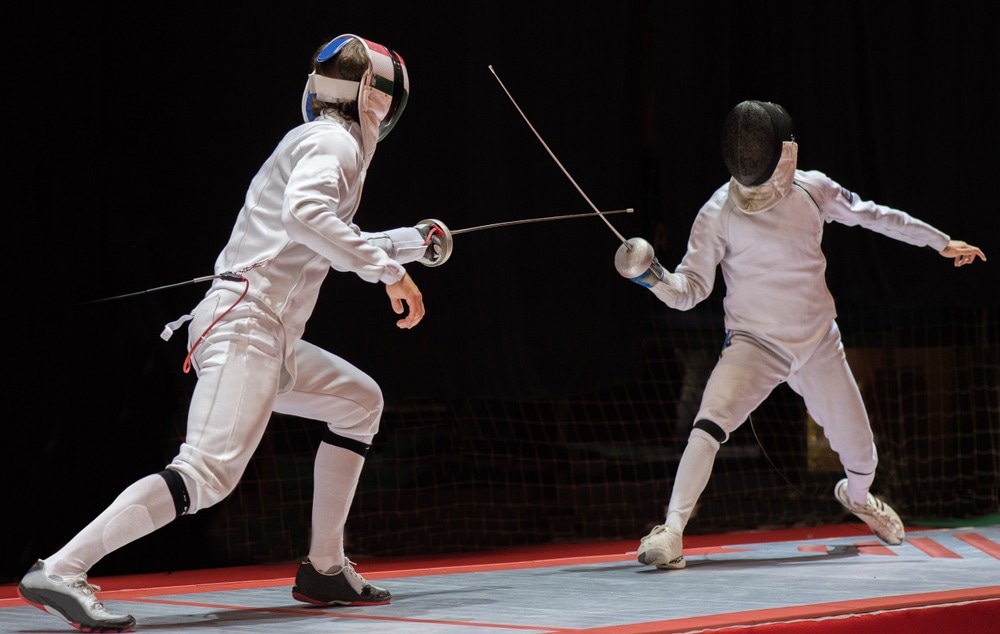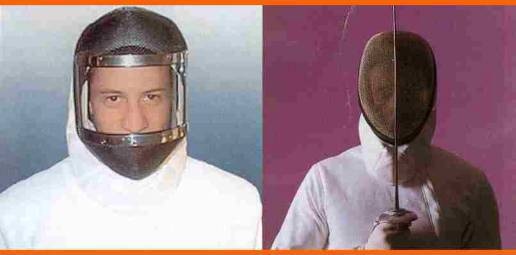|
The sport of fencing is one of only four to have featured at every modern Olympic Games. Until recently much of the equipment used had changed relatively little since its inception, but technological advances, and challenges to its Olympic status, have led to the adoption of several innovative materials, with varying degrees of success.

Image Credit: Fotokostic/Shutterstock.com
Swords, masks and clothing have all seen changes, the most recent development being the transparent mask, intended both to improve visibility for the competitor and make the sport more enjoyable for the spectator. Advanced materials for fencing blades and uniforms as well as the introduction of new metals and alloys is changing the sport for the better.
The Blade
There are three disciplines in modern fencing: foil, epee and sabre, each involving a different target area employing a different weapon and demanding a different technique. A feature common to all three disciplines is that the blades regularly break, turning a safe piece of sports equipment into a potentially lethal weapon.
Analysis of the fracture surfaces reveals the characteristic features of fatigue crack growth, which is understandable given that a successful attacking lunge can cause a blade to bend with a radius of curvature in the region of 200mm. Repeated bending during a blade's lifetime, coupled with surface damage from impacts with the opponent's blade, results in the accumulation of damage in the form of microcracks, which initiate fatigue failure. This is a particular problem with cheaper blades made from medium carbon steel.
Fencing Blade Materials and Manufacture
These blades are manufactured by quenching and tempering at 300 to 500°C, resulting in a tempered martensitic structure with a yield stress of between 1500 and 1700MNm-2. A more expensive foil material is maraging steel, which has a yield stress in the region of 2000MNm-2 and an increased lifetime.
The critical defect size for fast fracture of the maraging steel blades is over four times larger than in standard carbon steel types, which explains the extended lifetime. However, although the lifetime of the maraging blades is longer, they still fail by brittle fracture, resulting in a sharp edge that can penetrate the opponent's fencing uniform and cause serious injury.
A variety of other materials have been investigated for the foil, from glass and carbon fibre composites to dual-phase steels that contain fibres of martensite with an interpenetrating austenite phase. This dual-phase steel material has demonstrated high strength and exceptional toughness, with Charpy impact tests showing that blade samples are able to absorb 360J impact energy without breaking into two pieces, compared to 10J for conventional medium carbon steel blades.
The toughness originates from the inclusion of the austenite phase, which is ductile under the impact conditions and deflects the crack along the length of the blade, requiring re-initiation in an adjacent fibre of martensite if the growth is to continue.
Surprisingly this grade of steel has never become a standard production grade for fencing blades. Two reasons have been cited, one of which is the higher cost, the other the different feel of the blade, which makes it unpopular with fencers. The same explanations apply to glass and advanced materials for fencing including carbon fibre composite blades.
Fencing Face Mask Materials
This is not the case for the protective face masks used in the sport. There has long been a desire within fencing to enable clear vision of the opponent, something that is compromised by the current designs based on a close metal mesh. Although numerous attempts have been made to replace the metal designs over the years, no solution has offered any degree of consistent safety or clarity of vision. The pace of development has quickened in recent years due to threats from the International Olympic Committee to exclude fencing from the games unless it modernised itself. A key point in this demand was the need to make competitors' faces visible to spectators and television audiences during competition. The IOC’s demand catalysed a development drive that had until that point been very gradual.
Fencing Masks for the Future
Many fencing equipment manufacturers have responded to the challenge to produce a clear mask, and one company that has been successful is the UK-based manufacturer Leon Paul. The company has developed a clear mask made from the Lexan grade of polycarbonate (figure 1), a polymer chosen for its combination of excellent optical clarity and high impact resistance. The material is incorporated in two forms, a single 3mm section covered with another layer 0.5mm thick. The thinner, disposable outer layer protects the base layer from environmental stress cracking that could occur on exposure to organic solvent. It also protects the base layer from the effects of stress concentration due to blade damage on the surface of the mask.

|
The Leon Paul developed polycarbonate mask improves visibility for the combatant and allows the audience to be more interactive compared to the traditional mask on the right.
|
Tests at the Italian Fencing Federation laboratory comparing metal and polymer masks have shown that the polymer sections outperformed the conventional metal mesh sections. In drop tests from heights of 55cm with a mass of 2.4kg fastened to a steel spike (section 3 x 3mm square, with a pyramidal point angle of 60°) the metal mesh was penetrated, whereas the Lexan visor was only marked with an impression of the pyramidal point. Tests on complete masks also showed that the Lexan-based masks did not deform, while the metal mesh versions did and to an extent deemed sufficient to injure the fencer. Although the Olympic future of fencing is still uncertain the new mask technology will certainly play a major role in preserving the current status of the sport.
Protective Fencing Uniform
A third area of fencing to evolve in recent years is the protective clothing. Traditionally made from heavy gauge cotton fabric, the advent of Kevlar led to protective panels being woven into the garments to afford a high degree of localised protection. However, Kevlar suffers from a major disadvantage. It degrades when washed in biological washing powder or exposed to UV light. With due care and attention there is no degradation in protection, but the legal implications of selling such a garment encouraged manufacturers to look for alternatives. Today fencing clothing is made from a blend of cotton and high strength polymer fibres such as ballistic nylon, a combination that affords resistance to penetration of over 800N, and protection that is not localised.
Summary of Fencing Materials
These developments in materials technology are not only increasing the safety of fencing, but also making the sport more enjoyable for both competitors and spectators, and helping it to retain its Olympic status. These issues are vitally important if the sport is to maintain its current popularity.
|